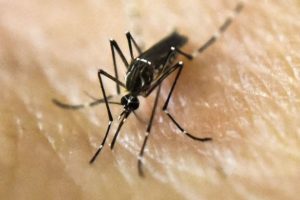The total number of Zika virus cases in the Philippines has reached to 17, with two new cases recorded.
This was confirmed by the officials of the Department of Health through a press briefing on Friday, October 14.
Health Secretary Paulyn Jean Rosell-Ubial said there are 17 total number of cases in the Philippine after two new cases were confirmed in the cities of Mandaluyong and Makati.
Earlier, the DOH said that 12 Zika cases were reported in Iloilo City and neighboring areas, while Cebu, Muntinlupa, Antipolo, Mandaluyong, and Makati reported a single case each.

According to Ubial, the new patient was a 27-year-old, non-pregnant female from Mandaluyong, while the one from Makati was a 42-year-old male. They both exhibited the usual symptoms of Zika, including rashes and fever with conjunctivitis or red eyes.
However, none of the 17 patients were hospitalized and have recovered already. Ubial said all were locally-transmitted cases.
In their latest regional committee meeting, the World Health Organization (WHO) confirmed with the Department of Health (DOH) that there is a possibility “of endemicity of this virus in the Western Pacific regions.”
Ubial said, “it is different from the virus that was discovered in South Africa, African region, as well as South America. It is presumed to be endemic in the Western Pacific region.”
As of now, the DOH is still doing the investigation on the possibility that this strain was present in the Philippines even before the outbreaks in Singapore and South America were reported.
“We’re still trying to confirm that this particular virus was already circulating in the Philippines, but we have not tested for it before. It was only tested when the outbreak in Africa and South America just reported globally, so we started testing for Zika,” Ubial said.
Due to the increasing cases, the Health Secretary said the DOH will continue doing its strategy to reduce the mosquito population in the country.
“[Use] insect repellents and insecticide-treated bednets if possible. Seek early consultation. We’re still offering free testing for dengue, Zika, and chikungunya to anybody who has symptoms. And say yes to fogging only when there is clustering of cases,” she said.
“Nasa rainy season tayo so malaki ang mosquito population natin. Bringing down the mosquito population is the best strategy to prevent our dengue, Zika, and chikungunya infections,” Ubial added.
Zika is carried by Aedes aegypti, which is also the main vector of dengue and chikungunya, and it is prevalent in the Philippines.
